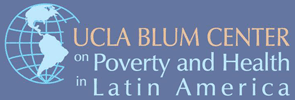Report from the field: 2015 UCLA Blum Summer Scholar José Cuchilla in Panama City, Panamá
Report from the field: 2015 UCLA Blum Summer Scholar José Cuchilla in Panama City, Panamá
by José Cuchilla, PhD Sociology Candidate
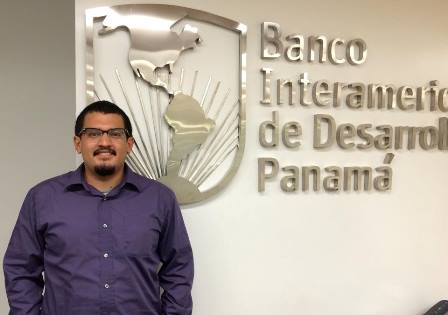 A)
A)
"Bienvenido a Panamá, José!" my host exclaimed as I carried my bags out of the airport, I had been planning this trip for a couple of months and now, two flights and 15 hours later, I had arrived to Panamá. This was my first time in Panamá, in fact, this was my first time out of the country for over a decade and a half. Although the humidity in the air was like nothing I've ever experienced, I was excited to begin my journey here for the summer as a UCLA Blum Summer Scholar. We packed my things into the truck and made our way to the city. On our way, I could see Panamá's skyline full of lights and the Tower Bank building, where I'd be spending most of my time working with the Salud Mesoamérica 2015 Initiative team.
To give a little background, the Salud Mesoamérica 2015 Initiative (SM2015) is a results based financing program and an innovative public/private partnership between The Bill & Melinda Gates Foundation, The Carlos Slim Foundation, The Government of Spain, The Inter-American Development Bank, and eight countries of Mesoamérica. These eight countries include Belize, Costa Rica, El Salvador, Guatemala, Honduras, Nicaragua, Panamá, and México. The SM2015 initiative's goals is to back the efforts of these eight Mesoamerican governments in reaching the United Nations Millenium Development Goals (MDG's). These goals include 1) to eradicate extreme poverty and hunger, 2) to achieve universal primary education, 3) to promote gender equality and empower women, 4) to reduce child morality, 5) to improve maternal health, 6) to combat HIV/AIDS, malaria, and other diseases, 7) to ensure environmental sustainability, and 8) to develop a global partnership for development. SM2015 specifically supports each of these eight countries in meeting the MDG's of reducing child mortality and improving maternal health within the poorest population groups. Being a results-based financing program, at the start of the program, each country receives around 50% donation funds and provides about 50% national funds. This money is used to carry out health evaluation of the poorest population groups in each country, in order to establish baseline rates. Once baseline rates have been established, each government in the Mesoamérica region commits itself to specific targets and indicators for malnutrition, vaccination, and maternal/infant mortality and morbidity. These target indicators then serve as gauges to measure how well each country is meeting its target goal. If the country meets the target, 50% of what the country initially invested is reimbursed to spend freely within the health sector.
Being that the SM2015 is such a large trans-national project, my job this summer specifically targets a small, yet important, section of the plan. My main role as a researcher is to examine factors associated with risky sexual behavior among adolescents living in Costa Rica. Costa Rica is an interesting country, while many regions of Latin America and the Caribbean continue to struggle with increases in adolescent pregnancies and risky sexual behavior, in Costa Rica, the national fertility rate has been in decline for the last 40 years. Statistics show that in the last decade, the fertility rate declined from 2.39 children per woman in 2000 to 1.82 in 2010, which is one of the lowest fertility rates in Latin America (Ministerio de Salud 2012; Villegas 2014). Not surprising, during the same time the prevalence of the use of contraception increased from 16% to 64% (Ministerio de Salud, 2012). Despite this, very little information is available on the factors that influence proper use of contraceptive methods, which is important information for programs that target adolescent sexual health in Costa Rica and across the region.
Currently, I'm working on developing a literature review looking at the most important factors associated with risky sexual behavior, both globally and regionally in Central America. I'm using this literature review in order to guide me as I begin to prep data from Costa Rica that has already been collected, with the goal of analyzing it and creating statistical models that allow us to determine factors closely associated with contraception use. At the end of the summer, the goal is to develop a paper that we can submit to a journal. Apart from working on this project, I also help the SM2015 team with other facets of projects. My time here, in fact, is extremely rewarding as I'm able to attend meetings, go out on field sites, learn about other projects, and network with like-minded individuals who are also passionate about improving the lives of people living in Latin America.
Panamá is a beautiful country. It has great weather, good food, and amazing architecture. I am extremely grateful for the opportunity to work with the Salud Mesoamérica 2015 team and The UCLA Blum Center this summer. The mission of the UCLA Blum Center is to improve the health and well-being of Latin American communities through research that informs policy, programs, and training for the next generation of leaders. As a Blum Center Summer Scholar, I'm doing just that! I'm not only learning about the techniques and skills used to conduct research, but I'm also actively participating in the process of change.
References
Ministerio de Salud et. al. 2012 "Visualizando la salud reproductiva y la sexualidad desde diversas perspecivas: un análisis a partir de la Encuesta de Salud Sexual Reproductiva, Costa Rica 2010". 1era Edición. San José Costa Rica.
Villegas, Susy. 2014. "Adolescent Pregnancy in Costa Rica." Pp. 257-79 in International Handbook of Adolescent Pregnancy, edited by A. L. Cherry and M. E. Dillon. Springer US.
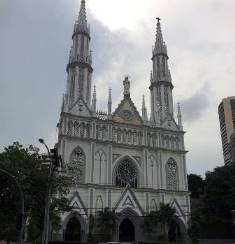 B)
B) 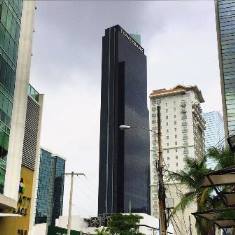 C)
C) 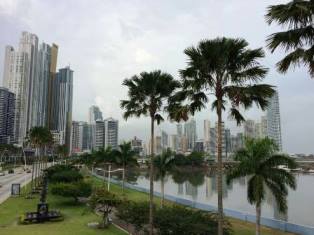 D)
D)
A) José Cuchilla at the IDB/SM2015 entrance
B) Iglesia Carmen, Panama City
C) Tower Bank building: Location of IDB/SM2015
D) Cinta Costera Panameña (Panamá coastal line)
